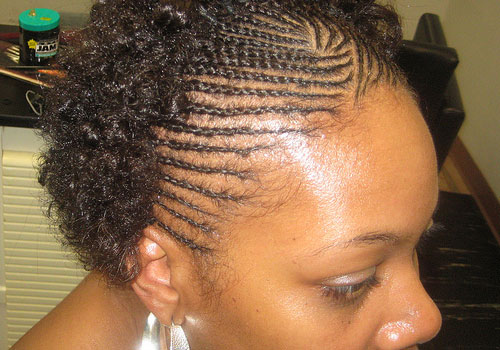-
Tips for becoming a good boxer - November 6, 2020
-
7 expert tips for making your hens night a memorable one - November 6, 2020
-
5 reasons to host your Christmas party on a cruise boat - November 6, 2020
-
What to do when you’re charged with a crime - November 6, 2020
-
Should you get one or multiple dogs? Here’s all you need to know - November 3, 2020
-
A Guide: How to Build Your Very Own Magic Mirror - February 14, 2019
-
Our Top Inspirational Baseball Stars - November 24, 2018
-
Five Tech Tools That Will Help You Turn Your Blog into a Business - November 24, 2018
-
How to Indulge on Vacation without Expanding Your Waist - November 9, 2018
-
5 Strategies for Businesses to Appeal to Today’s Increasingly Mobile-Crazed Customers - November 9, 2018
Certain Hairstyles May Increase Risk Of Hair Loss
“Dermatologists need to be conscious of the fact that many high- and moderate-risk hairstyles greatly improve hair manageability, and simply telling patients to abandon them won’t work for everyone”, Aguh said. Women should be informed regarding the risks associated with certain hairstyles and some specific types of braiding, so they can do something about it, the research team warned. The hairstyles that potentially led to the greatest hair loss are ones that cause traction at the roots of women’s hair, or what is otherwise known as “traction alopecia”.
Advertisement
The researchers state that traction alopecia is a more of a problem in African-American populations where hairstyles that pull hair back are common, such as cornrows.
Tying hair too tightly can be damaging for hair.
Bad cases of traction alopecia can lead to irreversible damage. Tight weave or extensions – especially if they are affixed with adhesive glue directly on the scalp also increases risk for hair loss.
Moderate-risk styles include some of the same styles noted to be high risk, but because they are performed on natural, unprocessed hair, they are less likely to result in hair loss, researchers said. “Instead, physicians can educate themselves to speak with patients about making the best hairstyling choices to minimize preventable hair loss”.
A press release from Johns Hopkins describing the details of the study can be found here.
As we reported recently, a new study claims that women who wear their hair extremely tightly pulled back are damaging their hair follicles and resulting in hair loss. One-third of these women are estimated to suffer from the condition, making it the top cause of hair loss in the group.
“In their review, the investigators also offered guidelines for dermatologists and other care providers to prevent and manage hair loss from traction alopecia”, it adds.
The researchers said that during the study they noted that the hair follicles are under continuous pressure when the hair is tightly pulled back for a long period of time.
In recent years the African American community has been taking a hard look at the hair practices we embrace and the long-term effects they have on our health, thanks to the natural hair movement.
Low-risk styles include loose buns, wearing one’s hair down, and practices that avoid chemical relaxers and reduce friction on the hair and scalp.
Braids, dreadlocks, weaves and extensions – especially when applied to chemically straightened hair, which weakens the hair shaft and can cause breakage on its own.
Experts said the best way to avoid losing your hair is regular maintenance.
Advertisement
Some advice that Crystal Aguh and her fellow researchers give is that extensions and weaves should be worn for only six to eight weeks in a row at the most, and also that braids should be loosened at least after two of three months, tops. This category also includes the use of wigs, and heat-related straightening products such as flat irons. “Permanent waves made with ammonium thioglycolate to create or alter curl pattern, together with added tension from chemical treatment, do the same”. However, Young tells reporters that the form of alopecia is preventable.





























